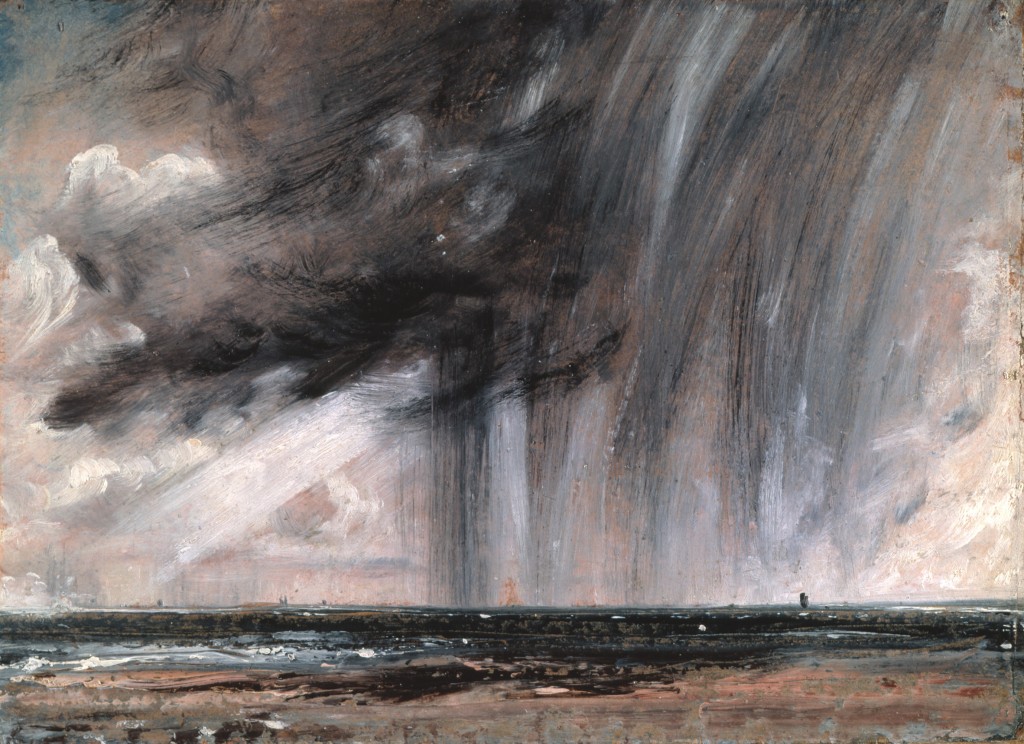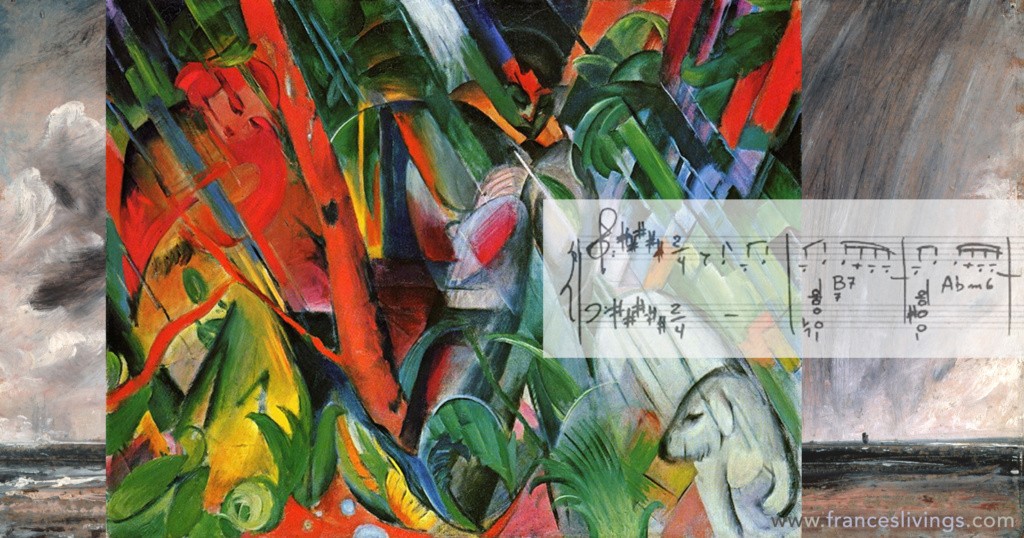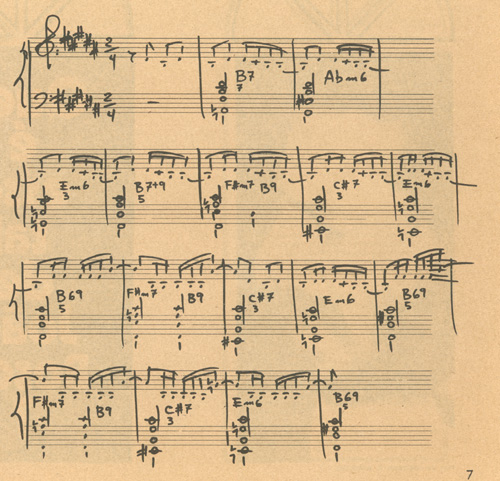Zur deutschen Version hier klicken: ![]()
Waters of March is a magical, world-famous Brazilian jazz song, written by Antônio Carlos Jobim. The very first time I performed it live was at a Sunday show in Los Angeles. I was nervous. It’s one of these songs you know you have to connect with as a musician. Otherwise the audience won’t stay with you. Besides, it’s such a famous song, you almost have the obligation to take listeners on a musical and emotional journey. So whether live or in the studio – and this is valid for all songs – the challenge lies in finding and interpreting the essence of that specific song. And yes, sometimes we succeed, sometimes we don’t. Interestingly, at my debut of Waters of March not only I, but the whole band connected with it.
Moreover, it took me on a journey, on a quite unexpected journey
– into the deep waters of March!
I’ll go back a bit: Waters of March (in Portuguese, Águas de Março) had been a song request from a friend and jazz lover after attending a prior show of mine. Like other songs in my repertoire, it was written by the Brazilian songwriter Antônio Carlos Jobim. My friend handed me a CD, so on my next early morning dog walk, I listened to the enticing version he had given me a copy of. I indulged into delightful notes by no one less than Art Garfunkel – a recording on his 1975 album Breakaway. During the course of the next few days, I dug up and listened to many others, like the original by Jobim and by contemporary female jazz artists like Cassandra Wilson. I immediately loved the flow of the song in combination with such interesting lyrics. He was right. It was a perfect fit for Ipanema Lounge, a musical band project I had founded and later the title of my 2016 album. After all, I had been originally inspired by Jobim – which is why the word Ipanema – from his biggest hit song, The Girl From Ipanema – is in the title. I decided to yet again look deeper into Jobim’s catalogue and to play with some of the songs.
Waters of March in Five Languages
Águas de Março was first released in 1972. Jobim wrote the original lyrics in Brazilian Portuguese and a second version a year later in English. Then, in 1973, another favourite songwriter of mine, the Egyptian-French troubador Georges Moustaki, released a recording. It was titled Les Eaux de Mars with French lyrics that he had penned. An Italian version, La Pioggia di Marzo followed in the same year written by Giorgio Calabrese, an Italian songwriter and frequent collaborator with French pop star Charles Aznavour. Many years later, in 2007, a further adaptation called Solen i maj was written in Swedish by Anders Lundin. The Spanish-French singer-songwriter Sole Giménez penned a version in Spanish in 2009, titled Aguas de marzo.
Waters of March – All Time Best Brazilian Song
Almost 30 years after Jobim had written Waters of March, Brazil’s leading daily newspaper, Folha de São Paulo conducted a poll including more than 200 Brazilian journalists, musicians and other artists. In 2001 Waters of March was named the all-time best Brazilian song. The lasting effects of Águas de Março is also discussed in The Atlantic, including suggestions, comments and videos from many readers. Listening to many of these versions I once again understood that it was a very magical and philosophical song. But the more I listened, the more impossible it seemed to memorize the lyrics for a live performance…
For Jobim Songwriting Was Like Psychotherapy
The words of none of the versions – whether in English, Portuguese or French – are constructed to create a logical narrative. There are no recognizable stanza patterns or traceable rhymes either. The lyrics consist of strings of free associations, of singular objects broken out of their original context and then assembled to a collage – moreover, since they are in motion, literally, figuratively and musically, it’s really a montage. It was not unusual for Jobim to write in this kind of stream of consciousness. The composer-guitarist Oscar Castro-Neves recalled that Jobim had told him, that was his version of therapy, which had saved him thousands in psychoanalysis bills. It had indeed been the psychoanalyst Sigmund Freud who, at the end of the 19th century, had developed the technique of “free association” as a clinical method for his patients undergoing psychoanalysis.
Waters of March et l’objects trouvés

In the song nearly every line starts in Portuguese with “É…” (“[It] is…”) and in English with “a”. “It” is a stick, a stone, a sliver of glass, a scratch, a cliff, a knot in the wood, a fish, a pin, the end of the road, and many other things. This technique of listing trivial objects reminds me very much of the art movement “l’objects trouvés”, originally founded by Pablo Picasso and Marcel Duchamp. As early as 1912, Picasso began to incorporate actual pieces of newspapers and other domestic items like matchboxes into his cubist collages. The word collage is derived from the French tern coller (to glue or stick together), resulting in an assemblage. Other artists like Kurt Schwitters, Georges Braque and Hannah Höch also utilized this technique, depicting wine glasses, bottles, cups and calling cards.
Aside from painting these objects – or even using photographs – another tendency was to make cubist constructions from various scavenged materials. Most famously introduced by Duchamp’s “Ready Mades“. These are individual objects, sometimes slightly modified and presented as art. His most well-known piece is Fountain (1917), a standard urinal purchased from a hardware store and displayed on a pedestal. Thus, by “simply choosing the object (or objects) and repositioning or joining, titling and signing it, the found object became art.” This was a technique Picasso also used in 1942: Tête de taureau (Bull’s Head), consits of only two parts, a bicycle seat and handlebars, which were wielded together.
Found Sounds – or musique concrète
In music, “Found Sounds” follows the same principle, whereby domestic sounds from the world around us are used. It can be anything, like a ball hitting the floor, a machine motor running or a lift door opening and closing. It was created in the 1940s, by a group of avant-garde French composers, who named it musique concrète (concrete music). In 1948 the French composer, writer, broadcaster, engineer, musicologist and acoustician Pierre Schaeffer composed the piece Etudes aux chemins de fer, which is constructed entirely from sounds found at a train station. The piece is like a musical collage, featuring train whistles and the sound of steam engines clattering along a track. With digital methods available nowadays, this technique is now called sampling as in the musician taking an electronic sample of another recording and using it in their work.
In Waters of March it is the environment, which is dissembled by the storm. The gushing waters, deliver these fragments and debris in the form of words.
The Influence of Poetry in Jobim’s Songwriting
The song lyrics also made me think of one of the 20th century’s most prominent poems, The Waste Land by T. S. Eliot from 1922. Not only is the poem’s form similarly obscure and untraditional – The Waste Land has many shifts in speaker, location and time – but especially the famous first line, “April is the cruelest month” easily conjures up Jobim’s seemingly unusual depiction of March as a destructive and cruel time. The influence of a renowned writer is not surprising, since Jobim was an avid reader of poetry by authors like Rimbaud, Baudelaire, Bandeira and Eliot, many of whose poems he could recite by heart.
The Influence of Weather on Songwriting
It is not unusual for songwriters to use weather conditions in songs. Rain is an especially popular topic, whether in the song Singing in the Rain, which was also a romantic comedy, or the smash hit It’s Raining Men. In the Southern hemisphere, March is the rainiest month of the year, which was Jobim’s initial inspiration for Águas de Março. He is said to have been travelling to his family rancho in Rio de Janeiro state, when a heavy rainstorm turned the roads and landscape to mud, which is also one of the lines in the song, “It’s the mud, it’s the mud…”. In Brazil, March represents the end of summer and the beginning of the colder season. In an article titled “Brazil: Waters of March“, the author, a foreign correspondent for the Al Jazeera media network, describes the rain like in the following:
“It hasn’t been raining more than 10 minutes when streets begin to flood. Thick and murky, it falls in corrugated sheets. Water. So coarse it’s opaque. Nothing but grey. And brown. And more grey. It’s March in Rio.”
Especially in the state of Rio de Janeiro, the weather is typically marked by sudden storms with heavy rains and strong winds. The soil is often too dry to soak up all of the water from the rain and flash floods occur. Violent flooding and landslides in many places around the city, not only destruct land and property but sometimes even kills people. The lyrics of the Portuguese version therefore also reflect this loss and destruction.
The Rite of Spring
This destructive interpretation of spring, reminds me of another groundbreaking piece: Igor Stravinski’s famous ballet and orchestral concert work from 1913, The Rite of Spring, which was so challenging at its time that it famously caused a riot at its première. It was in a similar way a piece of work with no specific plot or narrative, consisting of a succession of choreographed episodes. Stravinsky himself described The Rite of Spring as “a musical-choreographic work, [representing] pagan Russia […] unified by a single idea: the mystery and great surge of the creative power of Spring”.
The English Lyrics
For the English version, Jobim – whose music was already being played around the world by the early 60’s – changed a few elements. His goal was to provide a more life-affirming and universal perspective : He intentionally omitted specific references to Brazilian culture (festa da cumeeira, garrafa de cana), to its flora (peroba do campo) and folklore (Matita Pereira). So consciously holding a listener from the Northern hemisphere in mind, he depicted March as the month which marks the beginning of spring, an awakening. The waters are now instead from melting snow, from thawing, and not from the torrential rains as referred to in the Portuguese original.
Although both versions speak of “the promise of life”, the English one allows for these other, more positive interpretations with additional phrases like “the joy in your heart” and the “promise of spring”, a seasonal reference that would per se, be more relevant to most of the English-speaking world.
Shephard Tones
Both the lyrics and the music have a constant downward progression much like the water torrent from those rains flowing in the gutters, which would typically carry sticks, stones, bits of glass, and almost everything and anything. The orchestration creates the illusion of the constant descending of notes much like Shepard tones – an illusion that does in sound, what the old-fashioned barbershop pole does visually, just the other way around, that means, it seems to be rising forever.
Looking at an original score by Jobim, it becomes apparent that he was meticulous about the voicing, whereas many composers notate the chord symbols and melody, leaving the interpretation and therefore the voicing to the musician.
My Interpretation of the Song
Shortly before my first performance of the song, I was actually quite nervous. I wanted to do the song justice by being able to convey these sliding kaleidoscope images both lyrically and musically. I also wanted to be able to transport the ambivalence between tension and flow without over dramatization. Waters of March I think is a challenge for every vocalist. Who wants to sound too monotonous when listing these seemingly endless and disconnected objects? Because what matters is not so much the meaning of the individual words. According to the psychoanalyst Freud, their meaning varies in all of us anyway. It was rather, more about the sounds they create when put together in context with the music.
My musical director and guitarist, Greg Porée and I, had worked on our own arrangement of the song. So if you listen to the recording you will hear that the guitar starts with a very unique lick. Then the piano sets in. Riding on the groove of bass and percussion, I then start singing these strings of words. And that’s exactly how it was live. Very soon, I felt the emotion building up inside me. I felt in anticipation of something wonderous. I felt excited and suddenly realized, I had understood the universal meaning of the song!
Whether in Portuguese or English, streaming through me were all of these “things”, a stick, a stone, a sliver of glass. I was channeling metaphors and symbols of life flowing by in never ending new constellations, each one laden with its own history. Like in the line, “and the river bank talks of the waters of March”, that serves as a metaphor for events in the past and promises of things to come. Suddenly, to me even the English version didn’t feel like a calm stream just flowing along – but like a torrent.
In a similar way to Stravinsky’s Rite of Spring, even the English version wasn’t pastoral; a Beethoven or Schubert idea of spring, but an explosive one. Hence, without pain there is no joy. Without destruction there is no beginning. Whether it is the end of a cycle or the beginning of one, a cycle means life: No matter which way around, a beginning implies an end and an end implies a beginning of something new that will inevitably come. These were metaphors for events and situations that are chaotic, surprising, sometimes devastating. It made me feel very alive and that for me in that very moment was “the joy in my heart”.
Listen to my recording of Waters of March here…
*
UPDATE a few years later, on Saturday, September 10, 2016:
Since I first wrote this blog post, in 2013, I have performed Waters of March at many different venues, with different musicians and in different moods. What strikes me is that more and more, it has become this magical song that acts like a dream catcher, moreover, a poetic facilitator of a news bulletin. Like shortly after the Boston Marathon attacks happened in 2013. I almost choked while singing the lines, “The foot, the ground, the flesh and the bone, the beat of the road, a sling-shot stone…” There have been and probably still will be many stories whose journeys I will be taken on. There will be sceneries I will be enticed to visit because of this song’s associative contents and its permanent poetic state of flux, which is lastly what makes this song such a timeless classic.
*
For those of you who love these Brazilian jazz and Bossa Nova classics, here’s a whole playlist, including lots of different variations of Águas De Março / Waters of March:








Hi Frances. Loved your explanation of the Waters of March. It feels powerful even without hearing it! And where can I hear you sing it? Anything on YouTube? or CD’s?
Elaine
(PS. The jewelry designer at Hollywood Farmers Mkt)
Thank you Elaine! We will be recording at out next show on Sunday, March 10. I’ll keep you posted.
Loving the bracelet from your collection by the way!
This was a beautiful rendition but I was a little disappointed that the words were not printed and only paintings and still lifes were shown. I wanted to see the LYRICS and have loved this song since I first heard it so many years ago. So I shall keep looking until I find the LYRICS. But thank you anyway.
Thank you for your nice comment and your input. I will catch up on that soon!
I heard this the first time listening to Jane Monheit at Jazz Alley in Seattle so long ago – 1998 maybe? and loved it. I love your version just as much. The lyrics are constrained by the score, making this tune a stretch for anyone. Well done!
Thank you Patty! Yes, it’s a wonderful song and brings up new associations every time I sing it. And yes, to memorize it for live shows was challenging but it now just flows along – like water…
Cool!